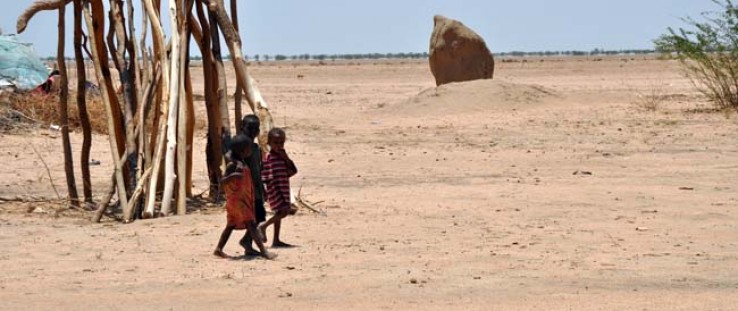 Ethiopian pastoralist children walk in the arid lands of Dire Dawa.
CREDIT: AYSHA HOUSE-MOSHI, USAID
Ethiopian pastoralist children walk in the arid lands of Dire Dawa.
CREDIT: AYSHA HOUSE-MOSHI, USAID
 Ethiopian pastoralist children walk in the arid lands of Dire Dawa.
CREDIT: AYSHA HOUSE-MOSHI, USAID
Ethiopian pastoralist children walk in the arid lands of Dire Dawa.
CREDIT: AYSHA HOUSE-MOSHI, USAID
It was not unexpected. USAID has been working in the eastern Horn of Africa for years, so climate scientists, USAID teams, and partners saw the cyclical droughts happening more and more often. From every 20 years, to every 10 years, and now more frequently.
Soaring global food prices, combined with drought in 2007 and 2008, hit the region hard. In response, USAID worked with government, U.N. and NGO partners to increase the resiliency of drought-prone communities.
These efforts have helped many escape the worst effects of the current drought. But for some, the scorched landscape returned too soon, before they had a chance to recover. In August 2010, USAID’s Famine Early Warning Systems Network (FEWS NET), in conjunction with partners such as the U.S. Geological Survey, NASA, and the National Oceanic and Atmospheric Administration, warned of La Niña weather conditions on the Indian Ocean. La Niña is a natural change in sea-surface temperatures that occurs every few years. The phenomenon would reduce rainfall and cause drought in parts of the Horn. Officials from the organizations expected Ethiopia, Somalia, and Kenya to be hit the hardest.
The predictions came true—both the autumn 2010 and spring 2011 rains failed. The drought is the worst the region has seen in 60 years, affecting more than 13.3 million people. In May 2011, FEWS NET reported: “This is the most severe food-security emergency in the world today.”
Starting in October 2010, USAID pre-positioned food in the region, ramped up food assistance programs in Ethiopia and Kenya, and considered ways to respond in the famine-affected areas of Somalia. These areas have largely been inaccessible due to the threat of the terrorist group al-Shabaab, which has held de facto control of much of southern Somalia for several years. Despite these challenges, the U.S. Government is using all available tools to help those in need. Projects undertaken by USAID and its partners include food distribution, nutrition, health, water and sanitation, economic recovery, and agricultural development.
The largest part of the response, food assistance through USAID’s Office of Food for Peace, amounts to two-thirds of current U.S. Government emergency assistance to the Horn. In addition, USAID’s Office of U.S. Foreign Disaster Assistance has provided critical life-saving health; nutrition; and water, sanitation, and hygiene services throughout the Horn of Africa as well as cash and vouchers to strengthen livelihood opportunities.
But countries cannot be sustained by emergency aid. To address challenges such as global food insecurity, longer-term solutions must be part of the equation. The U.S. Government’s Feed the Future initiative aims to reduce poverty and undernutrition by supporting countries to develop their agriculture sectors as a catalyst to generate broad-based economic growth.
As the overall framework to address global hunger, Feed the Future recognizes the importance of food and other humanitarian assistance, such as nutrition, during crises to save lives and protect livelihoods. The initiative also supports conflict mitigation and good governance efforts required to ensure that reductions in poverty and gains in nutrition stick.
One Child Every Six Minutes
Somalia is perhaps the most complicated country in one of the world’s most delicate regions. Not surprisingly, it has borne the brunt of the drought. According to UNICEF, as a result of this crisis, a child dies in Somalia every six minutes.
Limited access has played a large role in shaping the current situation. Historically, USAID has been the largest food aid donor for Somalia. However, in January 2010, the World Food Program (WFP) suspended part of its emergency operation because the security risks became too high in the areas controlled by al-Shabaab.
Between 2008 and 2010, 14 WFP staff were killed while providing food assistance in Somalia. While WFP has continued to operate in accessible areas in the north, the lack of access in southern Somalia has exacerbated the drought conditions, resulting in the July 2011 declaration of famine in six southern areas.
USAID’s response to the current crisis began with the FEWS NET alert in fall 2010.
Shortly after this forecasting tool warned of impending trouble, the Agency prepositioned approximately 19,000 metric tons of food in the region. In fiscal year 2011, USAID has contributed more than 31,000 metric tons of food aid for WFP distribution in accessible areas of the country, including Somaliland, Puntland, Mogadishu, border areas with Kenya and Ethiopia, and some central areas in Somalia.
The Agency is also using innovative new food aid programs to complement WFP food distribution. Under the new Emergency Food Security Program (EFSP), food is purchased locally and regionally, which saves on distribution time and shipping costs.
Additionally, in Somalia, USAID is providing $13.2 million to private voluntary organizations to support cash transfers to households faced with extreme food insecurity, enabling them to purchase foods directly in their local markets. These cash programs are a rapid method of getting cash resources into people’s hands. They not only give beneficiaries the freedom to purchase the kinds and quantities of food that they prefer, but also help infuse cash into the local economy, which in turn helps local shopkeepers and farmers.
EFSP resources also have been used to purchase regional ready-to-use therapeutic foods to treat 66,450 acutely malnourished children, primarily in the southern areas of Somalia.
Preventative Measures
Across Somalia’s two borders, in Kenya and Ethiopia, a more encouraging panorama has evolved amidst the crisis. “In both countries, where governance is strong and U.S. Government investments can reach people in need, prior development investments have paid off, and stable environments have allowed emergency aid to reach those in need,” says Greg Gottlieb, senior deputy assistant administrator in USAID’s Bureau for Food Security.
In Ethiopia, Africa’s largest labor-based social safety net program—put in place after a 2003 drought—is reaping large dividends by mitigating the impacts of the current drought. USAID is now helping 2.3 million of the 7.5 million chronically insecure individuals supported by the Government of Ethiopia’s Productive Safety Net Program through a combination of in-kind food assistance and financing for public work projects that improve food security.
In Kenya, the Agency supports WFP drought-relief operations such as food distribution, and nutrient-fortified feedings for vulnerable mothers and children affected by drought or floods, as well as large numbers of refugees at camps along the border.
But there is another key difference. Both Kenya and Ethiopia are Feed the Future focus countries—beneficiaries of international efforts to build internal agricultural resiliency. In 2009, President Barack Obama pledged $3.5 billion to support agricultural development and improved global food security, which leveraged another $18.5 billion in pledges from the international donor community in the wake of the 2007/2008 food-price crisis. In the United States, this pledge became Feed the Future.
What the F***? Internet Appeals Ask People to Think Bigger, Act Bolder
The F-word. Coming out of the mouths of top-tier entertainers. That’ll get a second look…and listen. The suggestively potty-mouthed celebrities (and a few politicians, too) are part of a symbolically bleeped Public Service Announcement, or PSA, called “The F Word: Famine is the Real Obscenity.”
The attention-seeking ad asks people to pressure politicians around the globe to step up emergency relief efforts in the Horn of Africa and make long-term investments in agriculture in developing countries to prevent future food crises.
While not exactly the sexiest of marching orders, the ad does appear to be part of a larger global effort that acknowledges donor fatigue, a global-get-involved spirit especially among young people, and the root causes of famine are preventable.
The ONE Campaign says it created the PSAs as part of its broader campaign to support long-term strategies to end famine.
Focus on 19
Led by USAID, Feed the Future is an interagency effort designed to improve agricultural development in 19 countries, helping to prevent future food crises. It concentrates on smallholder farmers, many of whom are women, as critical drivers of this potential economic growth.
The details may be complex, but the theory is simple: Improving the yields of subsistence farmers through tools like improved fertilizers, drought-and-disease tolerant seeds, and finding markets for their crops in environmentally sustainable ways, means better opportunities for the poor and improved food security for all.
In Kenya, as in Ethiopia, USAID assistance is addressing both emergency aid and long-term development.
Regions receiving emergency aid are most vulnerable to cycles of flood and drought, and largely found in the arid and semi-arid lands of Kenya and Ethiopia. In and around the refugee camps, including the world’s currently largest camp at Dadaab, Kenya, on the border with Somalia, the U.S. Government provides crucial emergency supplies and support to ballooning numbers of refugees.
Support to these refugees did not begin with the current crisis. USAID’s refugee assistance started in 1992, supporting over 2 million refugees fleeing conflict after the fall of the Siad Barre regime in Somalia. Currently, there are more than 920,000 Somali refugees in the Horn of Africa region and Yemen, many of them having left their home country because of poverty, conflict, drought, and extreme hunger.
Though much of the emergency food assistance is distributed directly to refugees, WFP has also created some food-for-asset programs for refugee-hosting communities and other drought-affected Kenyans. Food for assets involves providing individuals a wage in food for their participation in construction activities such as rainwater catchments, irrigation canals, and dams—all things that support pastoral or agriculture-based livelihoods.
Since 2010, the Agency has also been supporting WFP’s pilot cash-for-asset programs in select parts of Kenya. Previously, WFP had investigated which areas of the country would be most appropriate for the use of cash transfers and identified two—Mwingi and Tharaka districts—that are classified as semi-arid lands and have ongoing food-for-assets activities.
Through the water conservation projects, beneficiaries have been able to extend their water sources for an extra two to four months, and increase their yields for sorghum and other crops. This is particularly important in the Turkana region, which has benefited greatly from the construction of ponds for thirsty livestock and improved irrigation to allow communities in these arid lands to save crops that would otherwise wither and die from drought.
But in Kenya as a whole, as in Ethiopia, a longer-term framework has been crafted to buttress these emergency measures. Feed the Future supports projects that build food security by improving key agricultural value chains, conducting crop research, promoting better natural resource management, and including improved water management processes.
Fleeing Severe Drought in a Country at War
After making the difficult decision to flee their homes due to worsening drought conditions in southern Somalia, thousands of women, men, and children are embarking on an arduous 20- to 30-day trek to reach Dadaab, Kenya—home to the largest refugee camp in the world. Many are undernourished. All are physically and emotionally exhausted.
Their first stop is one of three recently established reception centers where they receive assistance from the American people: high-energy biscuits, a 21-day food ration of maize meal, wheat flour, vegetable oil, pulses (beans, peas, or lentils), corn-soya blend flour, and a variety of non-food items to meet their basic needs prior to formal registration by the Government of Kenya as refugees.
In fiscal year 2011, USAID provided food commodities valued at $50.7 million to support, the reception centers and ongoing monthly food distributions managed by the World Food Program for Dadaab’s more than 440,000 registered refugees. USAID is the World Food Program’s largest donor—both globally and for the Dadaab refugee operation.
Feed the Future efforts in Kenya began in September 2010, emphasizing the role of small-scale farmers, women in agriculture, and the private sector while complementing efforts by the Government of Kenya and other donors to enhance agricultural and dairy production and marketing.
In Ethiopia, Feed the Future efforts focus on strengthening selected value chains—including maize, wheat, coffee, honey, livestock, and dairy—while also encouraging private-sector engagement and improving market function.
Regionally, USAID’s mission covering the whole of East Africa is also working to open up access to regional markets with a focus on staple crops and livestock, as well as reduce trade barriers and increase the capacity of key regional African institutions and firms as part of the Feed the Future platform.
Looking Ahead
The latest forecasts indicate average rains in the fall of 2011 in the most drought-affected areas of the region, and conditions are expected to improve in most pastoral areas. Even so, FEWS NET forecasts that famine conditions will persist in southern Somalia into at least January 2012.
As long as millions of people around the world remain vulnerable to fluctuating climates and food prices, the U.S. Government will continue to use emergency-response mechanisms to address immediate needs in large-scale crises.
Dina Esposito, director of Food for Peace, explains: “In the face of devastating crises, the Agency supports activities wherever possible that not only provide relief but also enable communities to protect and rebuild their assets and infrastructure, thus providing a potential platform for further developmental growth.”
According to USAID Administrator Rajiv Shah, the U.S. Government will also continue to view long-term food security – support for the development of countries’ agriculture sectors – as the best preemptive response and most effective tool to curtail future food crises.
A Model of Preparedness in Ethiopia
If Somalia has borne the brunt of the current drought and ensuing famine, Ethiopia has fared comparatively better. The reasons are manifold, but among them includes a concerted government and donor response following a prior crisis.
After a severe drought in 2003, the Government of Ethiopia and donors designed and launched the Productive Safety Net Program (PSNP), the largest labor-based social safety net program in Africa. The USAID-supported PSNP focuses primarily on chronically food-insecure households in 318 woredas, or districts, which consistently suffer food gaps of three months or more because of poverty and little access to food. This program is a flagship component of the government’s food security program.
The PSNP aims to protect rural families’ assets so they are not forced to sell off livestock or send school-aged children to work to buy food to cover consumption gaps during lean seasons. It is also intended to improve community assets through conservation (e.g., reforestation, anti-erosion, improved water sources) and infrastructure (e.g., feeder roads, farmer training centers) improvements made through labor-based public works.
According to Dina Esposito, director of USAID’s Office of Food for Peace, the program works like this: “Most donors supporting the PSNP pool their resources, which the Government of Ethiopia makes available to the designated district-level authorities. These local authorities distribute cash or in-kind food payments to designated beneficiaries and oversee the public works activities. USAID’s Food for Peace resources go through our PVO [private voluntarily organization] awardees, who partner with the local authorities to provide both food payments and resources for the public works activities, as well as training for local officials implementing the program.”
In 2011, USAID’s PVO awardees supported 2.3 million of the 7.5 million chronically food-insecure individuals that fall under the PSNP umbrella, providing them food for three to six months and also funding public works projects in 59 districts.
Ethiopia’s PSNP allows these 7.5 million chronically food insecure individuals to retain their assets and maintain their food intake levels during hunger periods, rather than selling their assets and depending on emergency-relief support year after year.







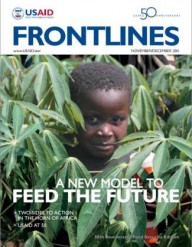

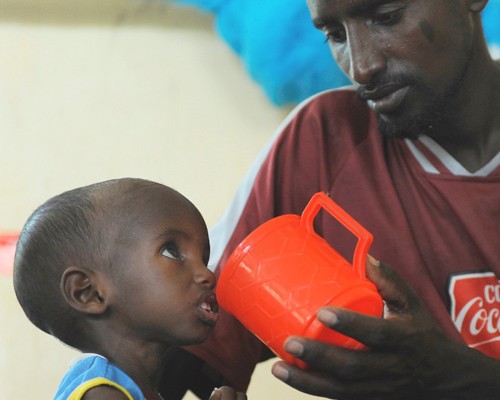
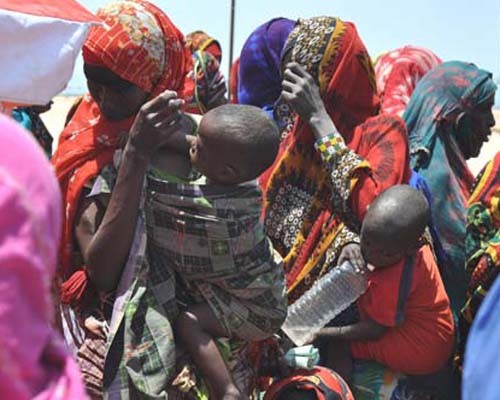
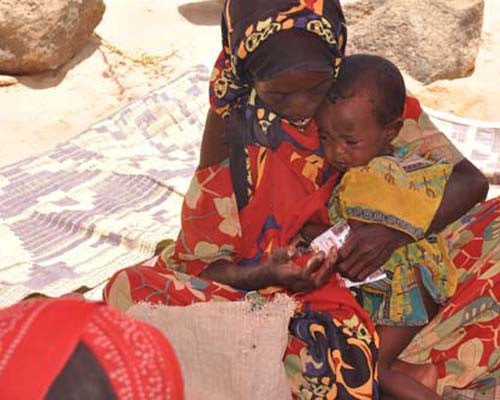
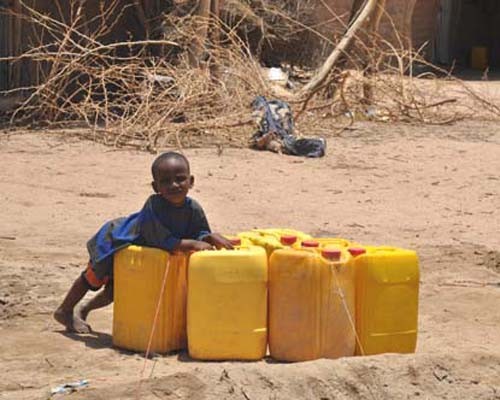
Comment
Make a general inquiry or suggest an improvement.